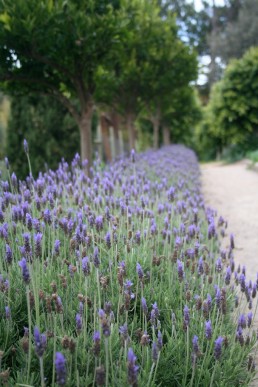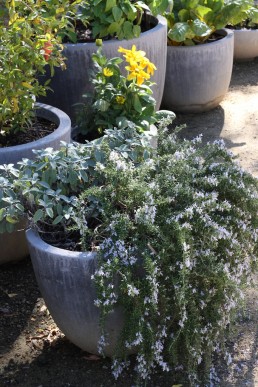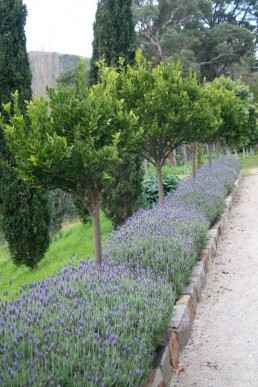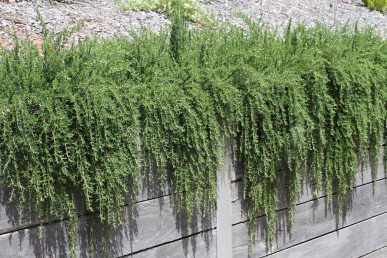Article and photos by Penny Woodward
Typically mediterranean plants, lavenders and rosemaries love well-drained, sandy soils and lots of sun, but hate humidity. More are killed by overwatering or planting into heavy soils, than for any other reason. Once planted in the right position the only care needed is regular pruning. French lavenders (Lavandula dentata) are great because they flower for most of the year, have a lovely mentholy lavender scent and provide nectar for bees, butterflies and beneficial insects.
The ‘Monet’ cultivar is much smaller growing than the more common full sized French lavenders, reaching only 50cm in height and 40cm across. This makes it ideal for hedges, either along paths or at the back of vegetable beds. Tip prune a couple of times a year to maintain a good shape and stop it becoming too woody. Because it flowers for so long, its hard to pick the right time to prune, so just do it when you have time and put up with not having flowers for a few weeks. New plants can be easily grown from cuttings.
Prostrate rosemary (Rosmarinus officinalis ‘Prostratus’) is the perfect rosemary to grow in a pot or raised bed where it can hang over the edge creating extra depth and interest. It has the added benefit of producing beautiful pale blue flowers in winter when not much else is in flower, as well as being a delicious herb used in a variety of dishes as well as herbal tea. Drink rosemary tea to sweeten the breath and ease indigestion, as well as helping a headache and improving memory.
Look at my facebook page to find out how I have been using this lavender and rosemary in an urban setting. Prostrate rosemary is fairly widely available but I have only seen dwarf French lavender ‘Monet’ for sale at Diggers




